
New research is helping to unravel the machinery that allows a mosquito to sniff out its human quarry, which could lead to more and better ways of foiling the disease-spreading insects. A report published today in the online version of the Proceedings of the National Academy of Sciences describes four genes that appear to produce odor-sensing molecules in Africa’s Anopheles gambiae, a carrier of malaria, the number two killer in the developing world. Understanding how such genes operate could en
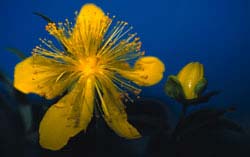
Talk about multi-tasking. A new study reveals that in the St. John’s Wort plant, Hypericum calycinum, the same chemical not only attracts pollinating insects but also deters herbivores that pose a threat to its survival. The findings appear in the current issue of the Proceedings of the National Academy of Sciences.
To the human eye, the flowers of H. calycinum appear as uniform yellow disks (top image). Insects with ultraviolet-sensitive eyes, however, see a dark, ultraviolet-absorbing ce

Evolution may make men ignorant and gullible.
Gentlemen: ignorance is bliss and gullibility is the best policy. A new mathematical analysis suggests that evolution favours babies who don’t much resemble their fathers, and males who believe their partner when she says a child looks just like him.
Anonymous-looking newborns make for uncertain fathers. But they also allow men to father children through undetected adultery, Paola Bressan of the University of Padova calculates
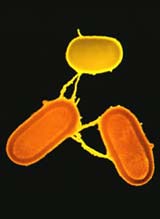
Bacteria caught mating with mammalian cells.
Cross-species coupling is generally frowned upon. But in the liberal labs of California it is actively being encouraged. Bugs that are persuaded to get down and dirty with hamster cells are rewriting sex manuals in the act.
Like humans, bacteria mate using a timely protruding phallus. It suckers a nearby bacterium and drags it close enough to shoot in DNA – a process called conjugation.
Although bacteria have been persuad
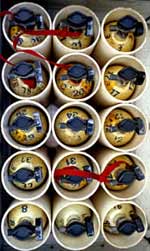
Scientists have detected a molecule they’ve been looking for since the 1920s.
Scientists in Italy have discovered a new form of oxygen 1 . In addition to the two well-known forms – ozone and the oxygen molecules in air – there is a third, they say, in which oxygen atoms are grouped in fours.
The oxygen molecules that we breathe (denoted O 2 ) consist of two oxygen atoms. This, the most stable form of oxygen, makes up about one-fifth of air. Ozone is
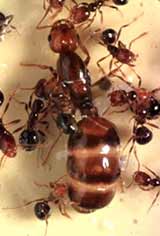
One gene controls whether a persistent pest serves one or many queens.
A protein that spots smell controls the power structure of fire ant colonies, Michael Krieger and Kenneth Ross of the University of Georgia, Athens, have discovered 1 . One form of the protein leads to nests with several queens living in harmony. The other leaves only one ruler.
Fire ants’ social life is of more than academic interest. The species (Solenopsis invicta) has spread from
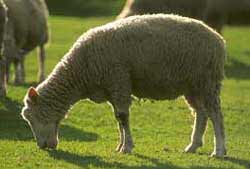
You would be forgiven for underestimating the intelligence of sheep, considering that their daily activities revolve around grazing. But research reported in the current issue of Nature indicates that, in fact, sheep possess more smarts than previously thought.
Keith Kendrick and colleagues at the Babraham Institute in Cambridge, England, investigated the sheep’s ability to distinguish and remember faces of both other sheep and humans. Presenting 20 sheep with pictures of 25 pairs of sheep

Scientists are finally beginning to understand how common genetic differences among individuals underlie differences in the structures that make up their brains. In the first attempt to actually map these variations, neurologist Paul Thompson and colleagues at the University of California at Los Angeles have discovered that brain structures related to cognitive ability and language seem to be under tight genetic control. The group’s findings, which could help explain how diseases like schizophre

Air lets water droplets skim across the kitchen sink.
Scientists have found the answer to a question pondered over many a kitchen sink: why do little droplets skim across the surface of washing-up water rather than mix with it?
Yacine Amarouchene and colleagues at the University of Bordeaux in Talence, France have discovered that the height from which the drops fall has no effect on their lifespan 1 .
Soap, detergent – and indeed food grease – are ’
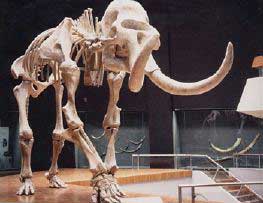
Examine any depiction of Ice Age life and you’re likely to find at least one—a woolly mammoth, that is. But popular appeal notwithstanding, the evolutionary history of this prehistoric beast has proved somewhat difficult to pin down. To that end, findings published today in the journal Science provide some much needed insight.
Working from an extensive Eurasian fossil record going back some 2.6 million years, Adrian Lister of University College London and Andrei V. Sher of the Russian Acad
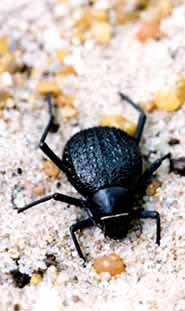
Humans learn water-gathering trick from bumpy beetle.
A desert beetle turns fog into drinking water with its wings, new research reveals. Materials mimicking the insect could help humans survive harsh environments.
Southwest Africa’s Namib Desert is one of the hottest and driest places on Earth. There is no rain, but on about six mornings a month a fog blows in off the Atlantic and across the land at gale force.
The beetle Stenocara traps this fleeting resour
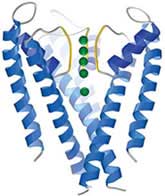
Dazzling snapshots show how ions power nerve signals round the body.
“Potassium channels underlie all our movements and thoughts,” says Rod MacKinnon of Rockefeller University in New York. His team has now unravelled the molecular mechanics of these minute protein pores. Some say the work merits a Nobel Prize.
Potassium (K + ) channels power the transmission of nerve signals through the body and the brain by ushering K + ions in and out of our cells. MacKin
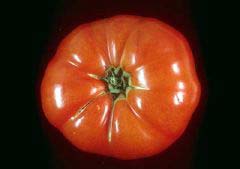
Researchers have put a new face on what may be an old genetic weapon to help plants fight off a pesky infection. Abhaya Dandekar and colleagues at the University of California at Davis gave plants an extra gene that protected them from crown gall disease—a scourge of the walnut, grape and rose, among others—when tested in the lab. They publish their findings today in the Proceedings of the National Academy of Sciences. When the bacterium that causes crown gall disease enters a plant, it starts

New light-sensitive glass can be recycled cleanly.
Researchers in Japan have developed recyclable light-sensitive glass. The new ’ecoglass’ does not contain the environmentally damaging halogen elements chlorine, bromine or iodine. These elements are essential to the photochromic glass that is currently used for car windscreens, sunglasses and visual display units.
Like photographic film, today’s photochromic glasses darken because they contain compounds of silver and halog
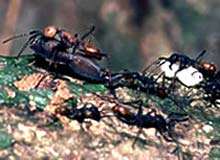
Army ants team little with large to lift heavy loads.
If you can’t see the point of the miniature back wheel on a penny-farthing bicycle, try riding a unicycle or watch an ant colony. Ants have realized that, to carry a heavy load, two supports are better than one – even if they seem comically mismatched.
When army ants partner up to carry a lump of food too big for a single ant to transport, an unusually large worker ant takes the front, and an unusually small one, the back
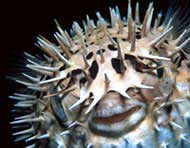
Draft Fugu genome will help find human genes.
A draft sequence of the puffer-fish genome is complete. The fish’s compact genetics should accelerate the discovery of human genes and their key controlling sequences.
Gene-prediction programs struggle to find genes in the 3 billion letters of the human sequence, which includes swathes of junk DNA and defunct pseudogenes.
The bony fish Fugu rubripes shares our gene repertoire but has a genome one-eighth of the size.